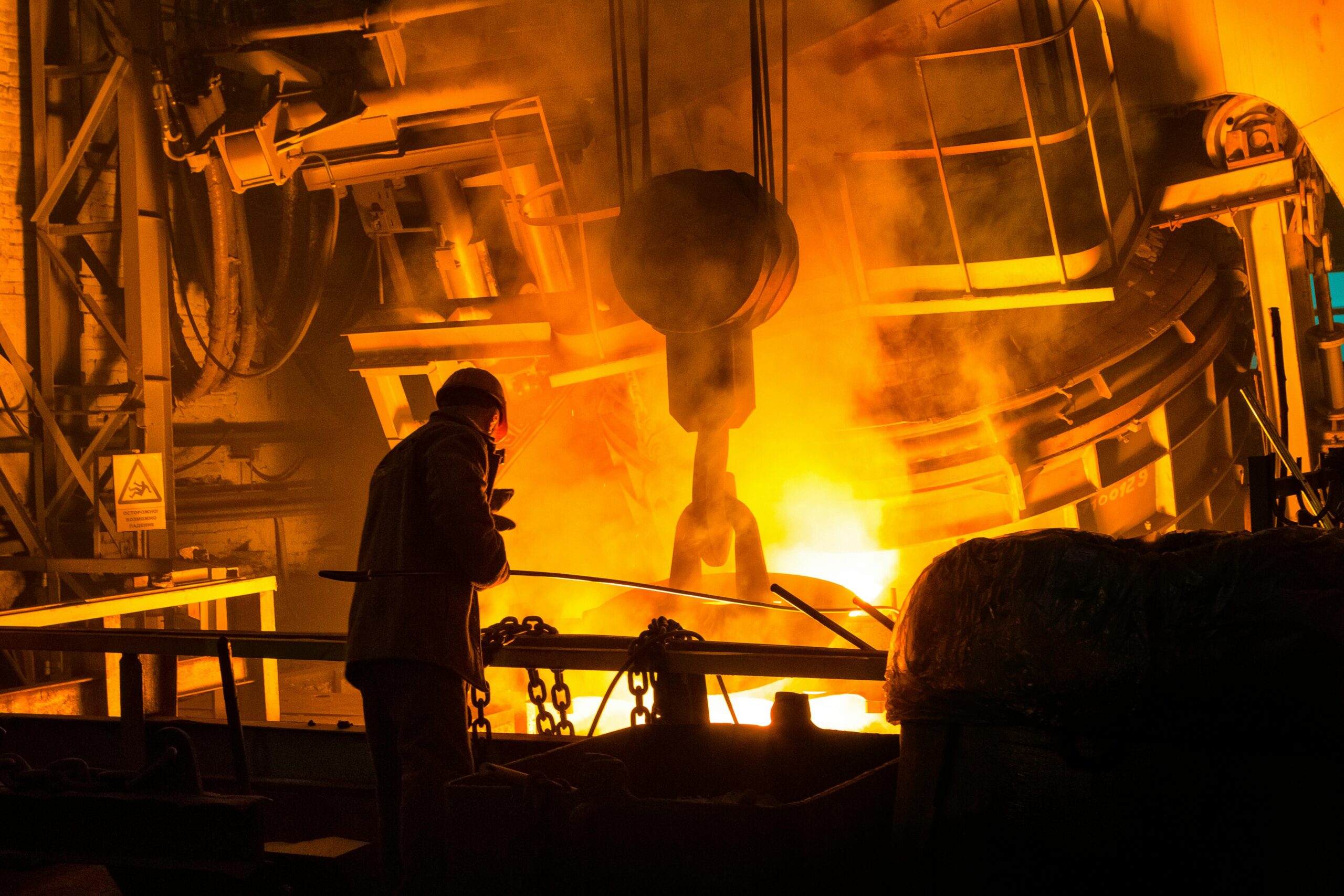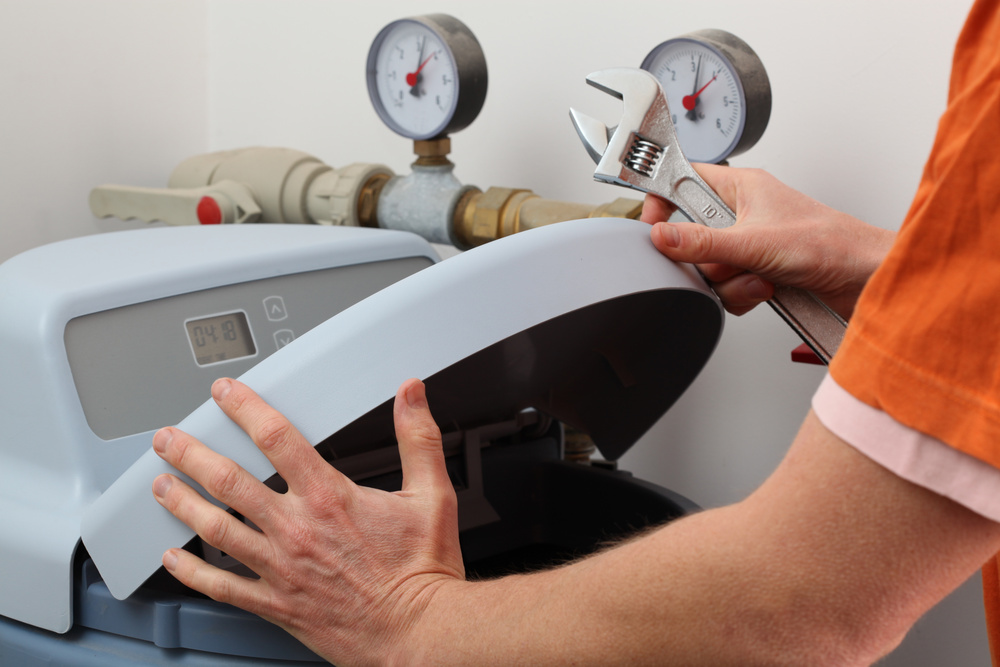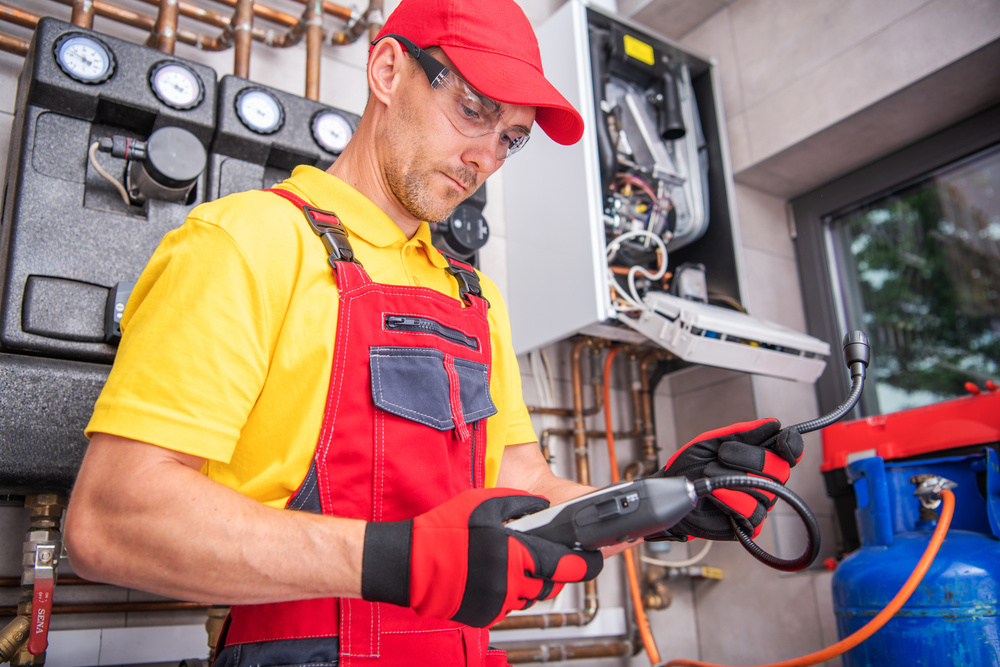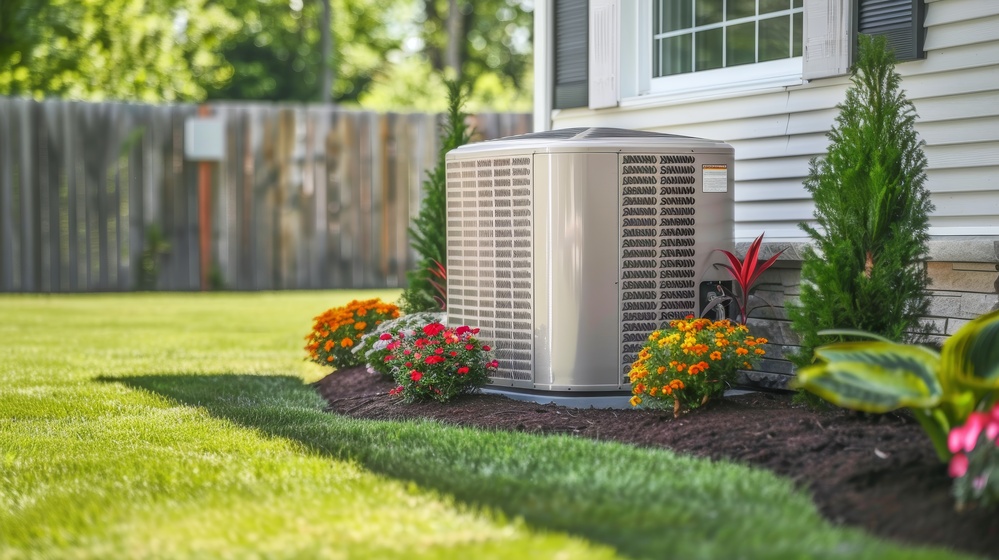HVAC Homeowner Guide for Furnace Installation and Maintenance

By Thomas Terry, SameDay Heating & Air
Welcome to SameDay’s furnace & heating guide. We’ll cover everything from furnace installation to maintenance tips. Understanding your heating system is the first step in ensuring your furnace is well cared for. This guide explores everything about furnace care, including furnace repair services and energy-saving practices. Our tips will help you stay warm and save money.
Furnace Installation Tips
New furnace installation is a serious investment, but, it can do wonders for your home’s comfort and energy efficiency. Choosing the right furnace installation service can make all the difference. This section will give you expert guidance for selecting and installing your furnace.
Understanding & Picking the Right Furnace Type
First, consider what the right type of furnace is for you. Some people favor electric furnaces for their simplicity and safety. They are easy to install and maintain, perfect for households seeking a straightforward solution.
Some homeowners may prefer natural gas or propane furnaces. These are more cost-efficient and powerful. They’re perfect for cold climates where strong, reliable heating is essential.
Consider these three factors when making your decision & decide what is most important for you:
- Your household’s heating needs
- Your local climate
- Potential energy costs
Why You Should Choose SameDay Heating & Air for Your Furnace Installation
At SameDay Heating & Air, we offer quick, high-quality furnace installation for homeowners in Utah. Read more about our furnace installation process from one of our many satisfied customers:
“Tyler and David and the team did a very professional job. They showed up on time, they completed the furnace and heat pump installation within the time frame they had projected. They cleaned up when they were finished. I am very pleased with the installation. I would highly recommend them for any residential install.” – Thomas Brennan wrote in his 5-Star Google Review.
Furnace Installation Process: What to Expect
When you reach out to SameDay Heating & Air, expect a transparent installation process from start to finish. Here’s our process in three steps:
- We’ll assess your home’s needs and recommend the most suitable furnace. At this point, we’ll provide a detailed estimate. Furnace installation cost should never be a surprise.
- Next, our skilled technicians will handle the actual installation. At SameDay Heating & Air, we emphasize precision and minimizing disruption to your daily life.
- Finally, our technicians will walk you through the system’s needs. They’ll show you how to operate and maintain your new furnace for the best efficiency.
Signs Your Furnace Needs Repair Services
Regular use of your heating system can lead to natural wear and tear, potentially causing various issues over time. Recognizing the signs that indicate your furnace needs repair can help you avoid more costly fixes in the future. Whether it’s a minor glitch or a significant breakdown, timely furnace service and repair will keep your home warm and comfortable.
Furnace Not Producing Heat
If your furnace isn’t generating heat, several issues could be at play. Common causes include problems with the ignition system, a malfunctioning thermostat, or a failed pilot light. Prompt repairs will restore your furnace’s ability to heat your home efficiently.
Weak or Inconsistent Airflow
Weak or inconsistent airflow from your furnace can result from multiple factors. Blocked air filters, issues with the blower motor, or problems with ductwork are typical culprits. Addressing these issues quickly will improve your furnace’s performance and ensure even heating throughout your home.
Frequent On and Off Cycling
If your furnace frequently turns on and off, known as short cycling, it may indicate several underlying problems, such as a dirty air filter, a malfunctioning thermostat, or an incorrectly sized unit. Quick repairs can help prevent further damage and improve your furnace’s efficiency.
Unusual Noises from the Furnace
Strange noises like banging, rattling, or squealing coming from your furnace often point to mechanical problems or loose components. Addressing these sounds promptly will help you avoid more expensive repairs and extend the lifespan of your heating system.
Visible Leaks Around Your Furnace
Water or condensation pooling around your furnace may indicate several issues, such as a blocked condensate drain or a malfunctioning humidifier. Leaks could also be due to a heat exchanger problem, which requires immediate attention to prevent further damage to your system and home.
Rising Energy Bills
A sudden increase in your heating bills without a corresponding rise in usage may signal a problem with your furnace. Issues such as a dirty air filter, worn-out parts, or an inefficient system can cause your furnace to work harder than necessary, leading to higher energy costs. Timely repair can restore efficiency and reduce your bills.
Factors Impacting Furnace Repair Costs
Furnace repair costs can vary widely depending on several factors. Understanding these factors will help you budget effectively and make informed decisions about your heating system. Whether the problem is a simple fix or a complex issue, knowing what to expect can make the repair process smoother.
Nature of the Problem
The specific problem with your furnace significantly affects the repair cost. Minor issues like a clogged air filter or a simple thermostat calibration are generally less expensive to fix. In contrast, more complex problems, such as a cracked heat exchanger or a malfunctioning blower motor, can be costlier due to the labor and parts involved.
Age of Your Furnace
Older furnaces typically incur higher repair costs. As components age, they may become more prone to failure and more challenging to find. Additionally, older systems often require more frequent repairs. It may be worthwhile to consider the costs of continuous repairs against the benefits of upgrading to a newer, more energy-efficient model.
Parts Needed for Repair or Replacement
The cost of furnace repair also depends on the specific parts required. Simple components, such as filters or belts, are relatively inexpensive. However, parts like blower motors, heat exchangers, or control boards can be more costly. The availability and quality of replacement parts can also impact the overall repair bill.
24/7 Emergency Furnace Services
What happens when you encounter sudden furnace breakdowns? That’s where our 24/7 emergency furnace repair services come in. Our team is always ready to address your urgent furnace repair needs. From unexpected malfunctions to routine fixes, we’ll make sure your heating system stays in top shape.
When to Call for Emergency Furnace Repair
Knowing when to call for emergency furnace repair can save you from costly damages. If you notice any of these signs, it might indicate serious issues that need immediate attention:
- No Heat, Cold Spots in Your Home, or Uneven Heating
- Higher Energy Bills
- Unusual Noises
- Short On & Off Cycling
- The Smell of Gas
- Poor Air Quality
Why You Should Call SameDay Heating & Air for Emergency Repair
SameDay Heating & Air knows that a furnace emergency during the cold winter season is a nightmare for homeowners. That’s why we offer emergency services, including furnace emergency repairs & more. Read more about how we helped a customer in need below:
“Highly recommend Same Day. Michael M. has been our technician twice and he is very communicative and was able to resolve the problem with our furnace. Same Day also honored the servicing they had done last fall and did not charge us for some recent work needed. We will be continued customers with service this great.” – said Jewls T. in a 5-Star Google Review.
How Long Do Furnaces Last Before Replacement?
A furnace’s lifespan is typically between 15-20 years. However, this might change based on the model, usage, and how well it’s maintained. Regular furnace maintenance can greatly extend your furnace’s life. Even better, it can make your furnace more efficient overall.
Routine Furnace Maintenance Tasks
Regular furnace maintenance extends your heating system’s lifespan and ensures its efficiency. Read on to see practical furnace maintenance tips to keep your system running smoothly.
Replace Your Air Filters Regularly
Regularly changing your air filter can make a huge difference in your indoor air quality. It will also greatly improve your furnace’s efficiency. Be sure to change your air filter every few months so your furnace can perform at its best.
Inspect & Clean the Blower Fins & Motor
Dirt and debris can impact your furnace’s efficiency. Have the system’s blower fins and motor inspected annually. Staying on top of this prevents higher bills or system breakdowns.
Calibrate & Test the Thermostat
A properly calibrated thermostat will ensure your furnace operates properly. Regularly test your thermostat for any inaccuracies. Then, make any necessary adjustments to save energy or improve your home’s comfort.
Examine & Clean the Burner
Be sure to have your furnace burner regularly examined and cleaned. These checks prevent buildup so your system can run efficiently. In particular, it ensures your system can safely maintain consistent output.
Check the Vent System & Air Intake
Be sure to keep the vent system and air intake clear. Periodic checks can prevent blockages that might hurt the furnace’s performance or even pose hazards.
Test Safety Controls
Testing the safety controls on your furnace ensures it operates within safe parameters. Regular checks help prevent potential hazards. Most importantly, these checks ensure the furnace shuts down in unsafe conditions.
The Benefits of Regular Furnace Maintenance
Regular furnace maintenance isn’t just about your system’s general efficiency. It also brings many long-term benefits. Staying proactive with maintenance maximizes these advantages.
Higher Energy Efficiency & Lower Energy Bills
Regular maintenance reduces the strain on your system. As a result, investing in maintenance can save you money on energy bills. Consistent upkeep ensures top performance, which translates to energy savings over time.
Save Money by Extending Lifespan of Furnace
We mentioned above that maintaining your furnace can greatly extend its lifespan. Regular checks and repairs prevent major breakdowns. These preventative measures save you money on potential costly replacements down the road.
Early Detection of Dangerous Issues
Regular maintenance can detect potential safety hazards early. Some serious examples include gas leaks or electrical faults. Promptly addressing these issues can prevent dangerous situations.
Better Indoor Air Quality
Routine furnace maintenance includes cleaning and replacing filters. As we mentioned above, this simple task vastly improves air quality. It reduces allergens and pollutants in your home.
What Causes High Heating Bills?
You can usually trace high heating bills back to several common furnace issues. Various factors, like aging furnaces and insufficient insulation, can cause increased energy costs. Once you understand these causes, you can identify solutions to reduce your bills.
Old Furnaces
As furnaces age, their operational efficiency declines. That’s why older furnaces often lack the efficiency of newer models. As a result, you might see higher energy consumption and heating bills.
Lack of Maintenance
We outlined the benefits of regular maintenance above. Neglecting furnace maintenance makes your system work harder than necessary. This reduced efficiency drives up your heating bills. Focus on furnace maintenance service to ensure you get the most from your system.
Inaccurate & Incorrect Thermostats
An inaccurate thermostat can lead to unnecessary heating. The furnace may run longer than needed, driving up your bills. This is where those thermostat checks we mentioned above come in handy.
Poor Insulation Causing Heat Loss
Insufficient insulation allows heat to escape from your home. As a result, your furnace has to work harder and use more energy. Improving insulation can greatly reduce heat loss and lower your bills.
Improperly Sized Furnace
A furnace that is too large or too small for your space can be inefficient. An improperly sized system struggles to provide stable heating. As a result, it costs more to operate.
Furnace Energy Efficiency: How to Keep Your Heating Low
Boosting your furnace’s energy efficiency reduces heating costs and keeps your home comfortable. We mentioned some important steps above, like proper insulation and regular maintenance. In this section, we will go into more detail.
Understanding the AFUE Rating
An AFUE rating refers to the Annual Fuel Utilization Efficiency rating. It measures how efficiently a furnace converts fuel into heat. A higher AFUE rating indicates a more efficient furnace that wastes less fuel. Higher ratings can save you money on heating costs and help the environment.
Insulate Your Home
Proper home insulation extends beyond filling gaps. It involves upgrading windows, doors, and roofing materials as well. The goal is to create a tight thermal envelope. Taking a comprehensive approach prevents heat from escaping. As a result, it reduces the energy needed to heat your home.
Regularly Maintain Your Furnace
We’ve covered a lot of the benefits of regular furnace maintenance above. You should always be on top of replacing faulty parts. But maintenance also involves making tailored adjustments so your system can meet your heating needs. Adjust settings and update various components based on your experience with the heater. For example, adjust the fan speed settings to circulate air throughout your home better. Or, replace the heat exchanger if your regular tests show less efficiency.
Install Smart Thermostats
Smart thermostats offer various advanced features. The greatest advantage is that you can adjust your home’s temperature based on daily patterns and weather conditions. This technology ensures your heating system operates only when needed.
How to Stay Warm During the Cold Winter Months
A comfortable winter doesn’t depend on your heating system alone. Adopt some proactive preparation strategies and smart habits to make your furnace’s job easier. Let’s explore some ways to prepare.
Prepare Your Furnace for a Cold Winter
Take these essential steps to maximize your furnace’s efficiency and reliability during winter months:
- Get a professional inspection from our team. The experts at SameDay Heating & Air can identify any potential issues before they become major problems.
- Clean and check your vents and ducts. Check your ducts and vents before the winter season. They should be clear of debris and obstructions to improve airflow and efficiency.
- Calibrate your thermostat. Proper calibration ensures your heating settings are accurate. This way, you use less energy while staying comfortable.
- Replace dirty and old air filters. Changing your air filter regularly helps maintain air quality in your home. It also ensures your heating system won’t have to work as hard.
Tips for Keeping Warm During the Winter Months
Once you’ve ensured your furnace is in good shape, it’s time to take some other steps to prepare for the cold. These strategies will keep you warm without solely relying on your furnace:
- Use space heaters wisely. Set up space heaters in commonly used rooms to provide targeted warmth. Make sure to place them far from flammable materials. Also, be sure to turn them off when they’re not in use.
- Layer your clothing when possible and wear warm accessories. Dressing in layers traps body heat more effectively. Adding accessories like scarves, hats, and gloves can help you stay warm indoors.
- Insulate your windows and seal drafts. Apply weather stripping or use draft stoppers around windows and doors. These tools keep cold air out and warm air in. Thermal curtains can also provide an extra layer of insulation.
- Take advantage of sunlight to warm your home. Open curtains on sunny days to let natural light heat your space. Then, close them as the sun sets to keep the warmth inside.
Radiant Heat & Heat Pumps: What You Should Know
Radiant heat systems and heat pumps are efficient alternatives for home heating. Let’s explore each method in more detail:
- Radiant heat systems provide warmth directly from surfaces like floors, walls, or ceilings. This method evenly distributes heat throughout a room. It eliminates the cold spots typical of forced-air systems.
- Heat pumps are versatile systems that transfer heat from the outdoors to inside your home during winter. It does the opposite in summer. They use existing outdoor air or ground temperatures to regulate indoor climate. As a result, they use less energy and have less environmental impact.





